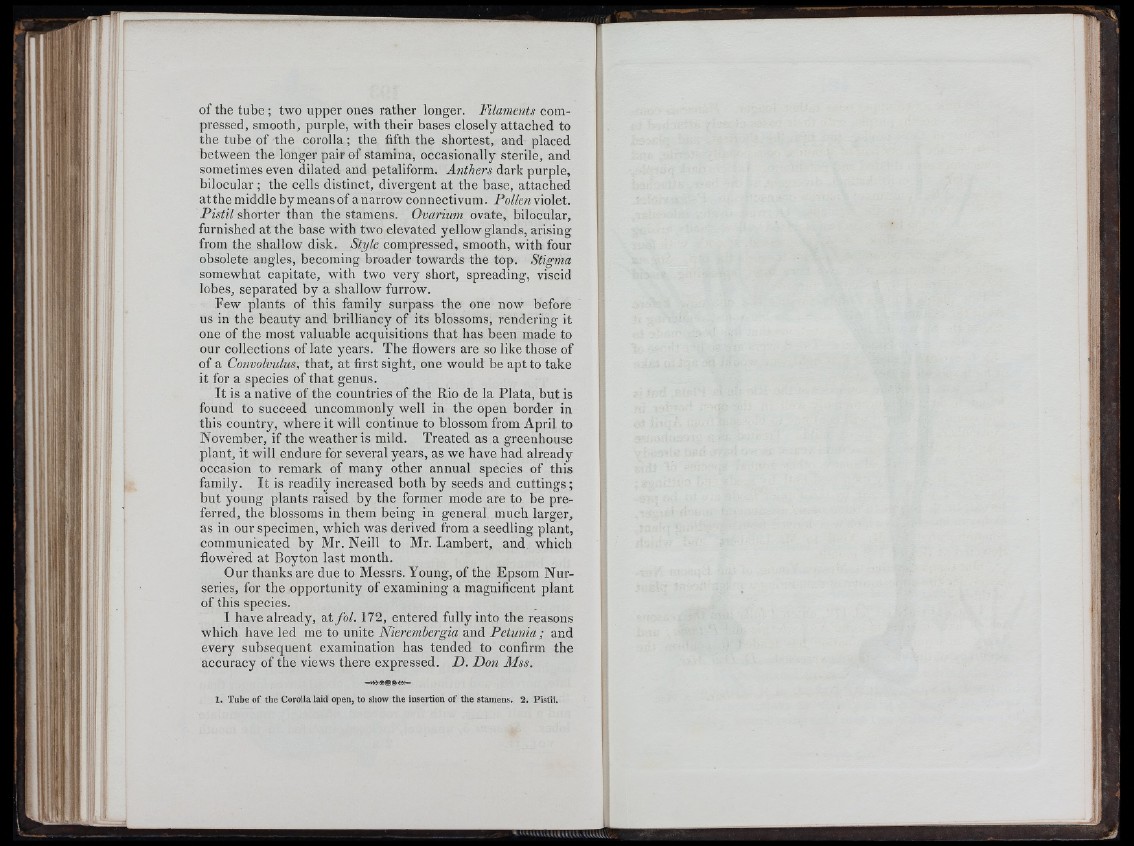
■ I
of the tube ; two upper ones rather longer. Filaments compressed,
smooth, purple, with their bases closely attached to
the tube of the corolla; the fifth the shortest, and placed
between the longer pair of stamina, occasionally sterile, and
sometimes even dilated and petaliform. Anthers dark purple,
bilocular ; the cells distinct, divergent at the base, attached
atthe middle by means of a narrow connectivum. Pollen violet.
P is til shorter than the stamens. Ovarium ovate, bilocular,
furnished at the base with two elevated yellow glands, arising
from the shallow disk. Style compressed, smooth, with four
obsolete angles, becoming broader towards the top. Stigma
somewhat capitate, with two very short, spreading, viscid
lobes, separated by a shallow furrow.
Few plants of this family surpass the one now before
us in the beauty and brilliancy of its blossoms, rendering it
one of the most valuable acquisitions that has been made to
our collections of late years. The flowers are so like those of
of a Convolvulus, that, at first sight, one would be apt to take
it for a species of that genus.
It is a native of the countries of the Rio de la Plata, but is
found to succeed uncommonly well in the open border in
this country, where it will continue to blossom from April to
November, if the weather is mild. Treated as a greenhouse
plant, it will endure for several years, as we have had already
occasion to remark of many other annual species of this
family. It is readily increased both by seeds and cuttings;
but young plants raised by the former mode are to be preferred,
the blossoms in them being in general much larger,
as in our specimen, which was derived from a seedling plant,
communicated by Mr. Neill to Mr. Lambert, and which
flowered at Boyton last month.
Our thanks are due to Messrs. Young, of the Epsom Nurseries,
for the opportunity of examining a magnificent plant
of this species.
I have already, at fo l. 172, entered fully into the reasons
which have led me to unite Nierembergia and Petun ia ; and
every subsequent examination has tended to confirm the
accuracy of the views there expressed. D . Don Mss.
1. Tube o f the Corolla laid open, to show th e insertion o f the stamens. 2 . Pistil.
i'l
!i: